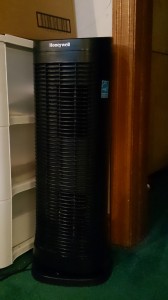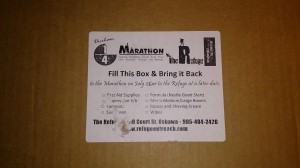When I was a child, my mother regularly marked my height and my brother’s on the door frame in the kitchen. Every Christmas morning, we would stand against the frame in our stockinged feet, and she would use a ball point pen to draw a line over the tops of our heads. An initial would be added – P for my brother, K for me – along with the date. By the time I was 15, there were over a dozen blue lines on the door frame, telling the story of how and when we had grown. For years, the kitchen door frame was the only part of the house that never got painted.
I started to follow the same tradition with my kids when they were little, but it became one of those non-essential things that I just didn’t have the energy for. Things were difficult for me back then. My dad had died, my older son had been diagnosed with autism, I was experiencing post-partum depression after the birth of my younger son, we were trying to recover from a financial crisis – drawing lines on a wall just didn’t feature anywhere on my list of priorities.
I may not have my boys’ growth recorded all in one place, but I do have photographic proof that they were once little. Like this picture, taken seven years ago:
And now the kid who once needed a chair in order to reach the counter is big enough to ride a bike. With no training wheels.
And the one who was barely peeking over the counter is almost as tall as the fridge. Taller, if you count the pineapple on his head.
My firstborn son’s hands are bigger than mine now. I can comfortably slip my feet into his shoes, and he is less than three inches shorter than me. My younger son is catching up rapidly. He has outgrown his shoes four times in the last year, and when he falls asleep on the couch, I can no longer pick him up and carry him to his bed. He can sprint around a 300m track faster than I can.
And yet.
They are still my babies, and they always will be. When they come stumbling into the kitchen first thing in the morning, their faces puffy from sleep, I don’t see the teenagers they will one day be, I see the newborns they once were. When they are standing in front of me with tear-streaked faces or scraped knees, I still have the ability to comfort them with a gentle touch, with a kiss, with a Band-Aid sprinkled with magic dust. I can still make them laugh by acting like a goof.
When they greet me with a smile, throw their arms around me and hold on as if they are never going to let go, my heart still explodes with love.
And that is never going to change. Because even when they are taller than me, they will still be my babies.
This is an original post by Kirsten Doyle. All photos accredited to the author.





















